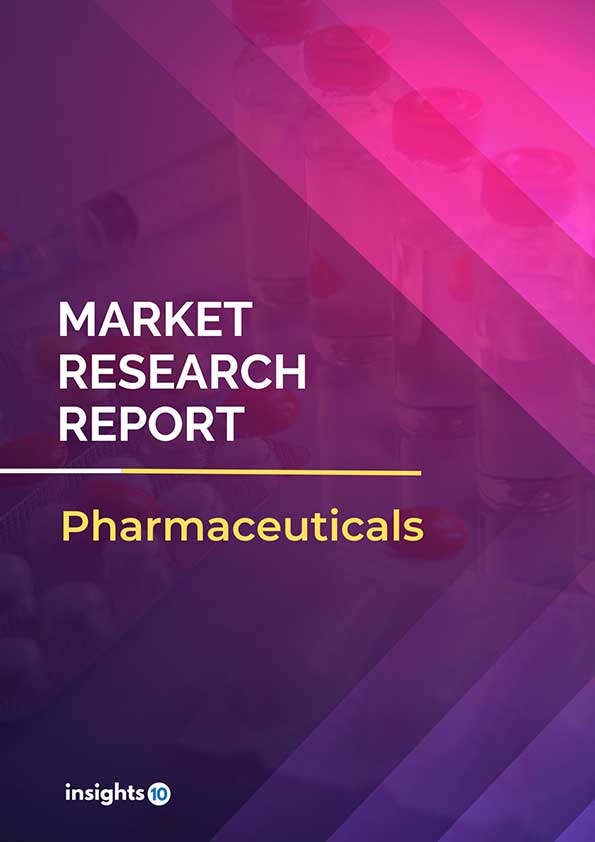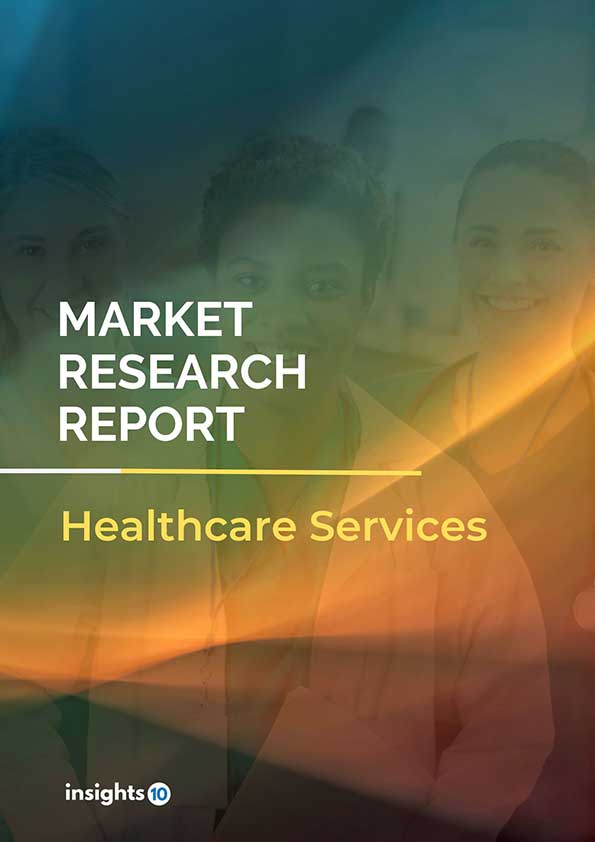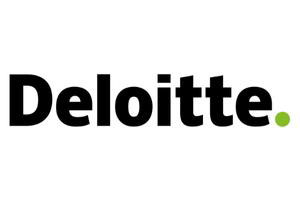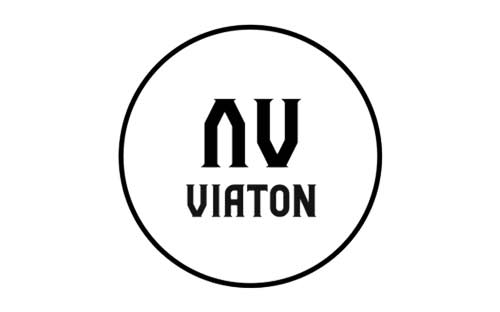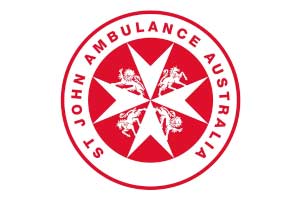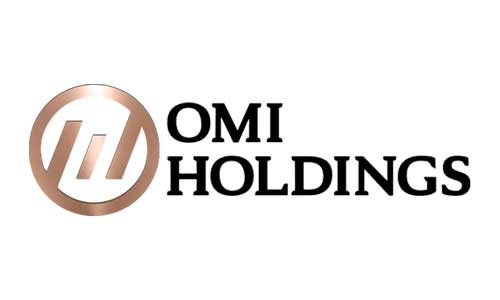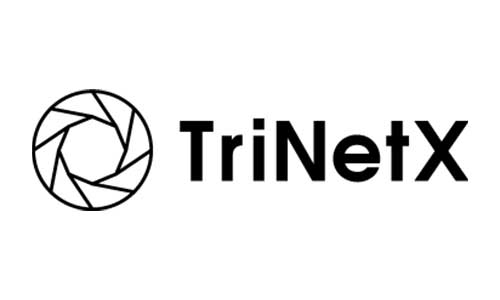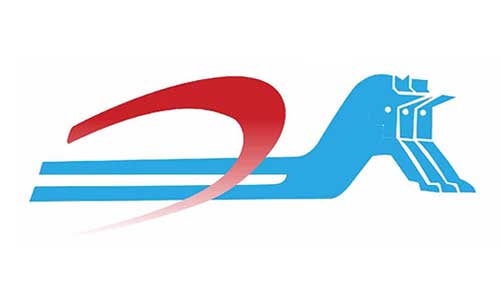Germany Diabetes Therapeutics Market Analysis
German diabetes therapeutics market is expected to grow from $5.26 Bn in 2022 to $9.67 Bn in 2030 with a CAGR of 7.9% for the forecasted year 2022-30. The growing prevalence of diabetes and various other factors like obesity and lack of exercise are contributing to the expansion of the market. The German diabetes therapeutics market is segmented by type, application, drug, route of administration, and distribution channel. Esteve Pharmaceuticals, Celares, and Salix Pharmaceuticals are the major players in the German diabetes therapeutics market.
Buy Now

Germany Diabetes Therapeutics Market Executive Analysis
German diabetes therapeutics market size is at around $5.26 Bn in 2022 and is projected to reach $9.67 Bn in 2030, exhibiting a CAGR of 7.9% during the forecast period. Jens Spahn, the minister of health, is asking for an increase of $31 Bn in the 2022 budget. This year, the central government will spend a total of $543 Bn. For the years 2022 and 2023, the Finance Ministry recently received requests totaling about $54 Bn for the fields of health, care, and pensions. In 2023, the contributions for more than 57 Mn GKV members will be considerably increased.
At least 7.2 % of the population in Germany currently has diabetes, the majority of which is type 2 diabetes, based on the estimate. Over the next 20 years, there will be a significant rise in the number of diabetics. Up to 12 Mn individuals in Germany could have type 2 diabetes in 20 years, according to researchers at the Robert Koch Institute (RKI) in Berlin and the German Diabetes Centre (DDZ) in Düsseldorf. From 2015 to 2040, this would represent a rise of up to 77%.
A novel hormone combination has been created by a research team from Helmholtz Munich, the German Center for Diabetes Research (DZD), and Novo Nordisk to treat type 2 diabetes in the future. A new and extremely effective medication has been created by combining the blood sugar-lowering properties of the drugs tesaglitazar and GLP-1 (glucagon-like peptide-1). The benefit is that Tesaglitazar only penetrates tissue that contains GLP-1 receptors thanks to the GLP-1 and Tesaglitazar combination. This increases the impacts on sugar metabolism while lessening the side effects of tesaglitazar. Animal studies using the novel medication have already been completed successfully. Tesaglitazar helps type 2 diabetic people with their glucose and fat metabolism. It works to improve insulin sensitivity by interacting with two receptors in the cell nucleus. The novel medication enhances sugar metabolism and glucose tolerance. The next step for the researchers is to find out if this medication can also be used to treat type 2 diabetes in people and if biochemical adjustments can be made to improve the efficacy of this novel combination treatment.
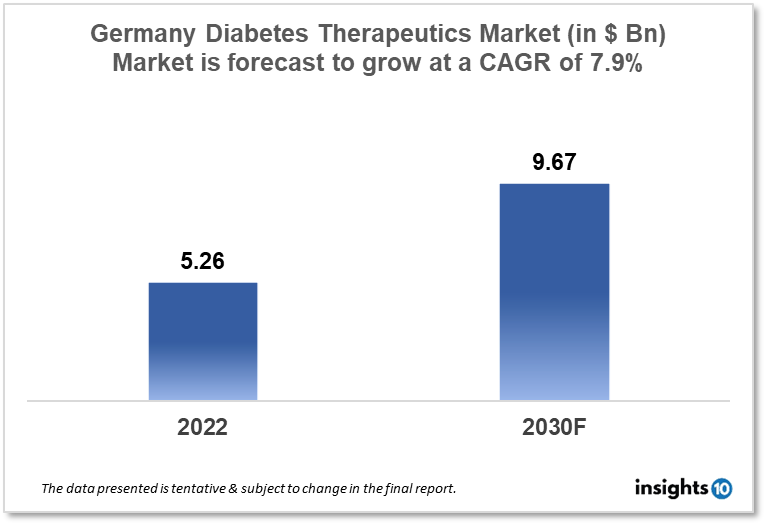
Market Dynamics
Market Growth Drivers
The German Diabetes Center (DDZ) estimates that at least 7.2% of the population in Germany presently has diabetes, and that number will rise significantly over the next 20 years. Obesity, an unhealthy diet, and lack of exercise are the primary causes of the rise in newly identified Type 1 and Type 2 diabetes cases. Healthcare spending and the quickly rising incidence and prevalence of diabetic patients are indicators of the growing use of diabetic care medications. These mentioned factors are responsible for the expansion of the German diabetes therapeutics market.
Market Restraints
The cost of treating diabetes can be high, especially for more recent methods of therapy. Patients may find it difficult to pay for care as a result, and the use of novel treatments may be hampered. Strict regulations apply to the German diabetes therapeutics market, especially regarding drug approval and cost. This can limit a company's ability to establish prices and make it difficult for them to introduce new products to the market thus limiting the development of the German diabetes therapeutics market.
Competitive Landscape
Key Players
- PharmaLex (DEU)
- Pensatech Pharma (DEU)
- NextPharma (DEU)
- Esteve Pharmaceuticals (DEU)
- Celares (DEU)
- Salix Pharmaceuticals
- Takeda Pharmaceutical
- Ji'Nan Orgachem Pharmaceutical
- Shihuida Pharma
Healthcare Policies and Regulatory Landscape
One of the primary responsibilities of the Federal Institute for Drugs and Medical Devices (BfArM) is the authorization of pharmaceuticals under the authority of the Medicinal Products Act (Arzneimittelgesetz, AMG). The health benefit, efficacy, safety, and pharmaceutical quality of the medicinal products, are examined during these licensing processes. Additionally, the BfArM performs crucial duties in relation to drug licensure on a European level. The BfArM either registers homoeopathic medications without a declaration of indications or licenses them with indications. Rare side effects that are not always detectable during the clinical studies needed for licensing may be discovered if a medicinal product is used by a large number of patients after receiving marketing authorization. Such reports of negative drug reactions are gathered and evaluated by the pharmacovigilance section. The BfArM acts accordingly to guarantee patient protection based on this.
1. Executive Summary
1.1 Disease Overview
1.2 Global Scenario
1.3 Country Overview
1.4 Healthcare Scenario in Country
1.5 Patient Journey
1.6 Health Insurance Coverage in Country
1.7 Active Pharmaceutical Ingredient (API)
1.8 Recent Developments in the Country
2. Market Size and Forecasting
2.1 Epidemiology of Disease
2.2 Market Size (With Excel & Methodology)
2.3 Market Segmentation (Check all Segments in Segmentation Section)
3. Market Dynamics
3.1 Market Drivers
3.2 Market Restraints
4. Competitive Landscape
4.1 Major Market Share
4.2 Key Company Profile (Check all Companies in the Summary Section)
4.2.1 Company
4.2.1.1 Overview
4.2.1.2 Product Applications and Services
4.2.1.3 Recent Developments
4.2.1.4 Partnerships Ecosystem
4.2.1.5 Financials (Based on Availability)
5. Reimbursement Scenario
5.1 Reimbursement Regulation
5.2 Reimbursement Process for Diagnosis
5.3 Reimbursement Process for Treatment
6. Methodology and Scope
Diabetes Therapeutics Segmentation
By Type (Revenue, USD Billion):
- Diabetes 1
- Diabetes 2
By Application (Revenue, USD Billion):
- Preventive
- Prediabetes
- Nutrition
- Obesity
- Lifestyle Management
- Treatment/Care
- Diabetes
- Smoking Cessation
- Musculoskeletal Disorders
- Central Nervous System Disorders
- Cardiovascular Disease
- Medication Adherence
- Chronic Respiratory Disorders
- Gastrointestinal Disorders
- Rehabilitation
- Substance Use Disorders & Addiction Management
By Drug (Revenue, USD Billion):
- Oral Anti-diabetic Drugs
- Insulin
- Non-insulin Injectable Drug
- Combination Drug
By Route of Administration (Revenue, USD Billion):
- Oral
- Subcutaneous
- Intravenous
By Distribution Channel (Revenue, USD Billion):
- Online Pharmacies
- Hospital Pharmacies
- Retail Pharmacies
Insights10 will provide you with the reports within 10 key parameters which are:
- Market Overview
- Market Growth Drivers & Restraints
- Epidemiology of Disease Type
- Market Segmentation
- Market Share
- Competitive Landscape
- Key Company Profiles
- Healthcare Policies & Regulatory Framework
- Reimbursement Scenario
- Factors Driving Future Growth
Based on our many years of experience, we believe that these are the parameters that are critical to decision-making for business stakeholders. Our focused approach to developing reports focused on 10 key parameters, enabled us to arrive at the name “Insights10”.

Stage I: Market Data Collection
Primary Interviews: We have developed a network of experts, freelancers, and researchers across countries through which we engage with local experts to gather key data points and assumptions about each market. We also engage regularly with some of the best market research agencies such as Atheneum, GuidePoint, GLG, etc. to conduct surveys and interviews, and build intelligence. We have language translators as a part of our team, who between them can cover 30+ languages allowing us to extract better local insights.
Secondary Data Collection: We have developed strong expertise and experience in secondary data collection methods for developing unique data sets and research material. We gather data from multiple reliable sources to maintain a high level of accuracy and consistency. The market data is analyzed and forecasted using appropriate statistical and coherent models. The report offers an overall analysis of the market size, growth, and market share as well as a segment-level analysis of the specific market. Our report includes precise, to-the-point information related to the overall market, competition, growth drivers, challenges, regulatory updates, and competition.
Data Sources: We have access to multiple highly reliable free and subscription data sources. We have many years of experience to understand which sources are more dependable for what and which to prefer for the reliable and latest information. The key sources of information include the following, but are not limited to:

Stage II: Market Data Analysis and Statistical Model
Market Trends: We generally look at macro parameters and micro indicators. The macro parameters include changes in government policies, demand and supply of the market, government intervention programs, and major market share. The micro indicators are GDP growth, market size, market volume, etc. We also understand nuances specific to each country like the US, Canada, India, Germany, etc., and have worked across 60+ countries and hence not only understand global trends but how these differ by country, how payment models, market structure, cultural parameters, etc. differ in each country.
Market Sizing and Analysis: Our expert data analytics team has created various market forecast models by employing the top-down approach i.e. starting with the large overall market and segmenting different areas and the bottom-up approach i.e. starting with population and epidemiology and rolling up based on spend, etc., estimating the size of the market, and distributing among the geographic and/or product segments.
The top-down approach is mainly used for new product forecasting and the bottom-up approach is used for demand estimation of any product for different countries summed up to form the total market. We are able to round off insights and build stronger forecasts because we always do both these methods and triangulate the final numbers.
The study on the market covers the analysis of the leading geographies such as Asia-Pacific, Africa, Europe, Middle East, North America, and Latin America for the period of 2022 to 2030. The qualitative analysis covers the industry landscape and trends, market opportunities, competitive landscape, and policy and regulatory scenario, and the quantitative analysis covers different market estimates and forecasts.
Data Triangulation & Validation:
Data triangulation of various sources and results of the research are carried out by benchmarking with reliable sources such as industry statistics, statistical databases, and company-level averages, etc.
We make sure to finalize the numbers in alignment with the market research. Firstly, our internal experts ensure thorough validation and checking to ensure accurate and precise analysis and then validation is also done using a multiple-data analysis model. Two-level validation is done and entails the finalization of the report scope and the way of representation pattern.
(1).png)
Stage III: Interpretation and Presentation
Analysis & Interpretation: The information gathered is then analyzed and synthesized. The second series of interviews are done if necessary to check and validate. The future opportunities are analyzed by understanding product commercialization and many other factors. It also comprises the analysis of data discrepancies observed across various data sources. Information procured from secondary and primary results is then, interpreted by considering the following parameters: (a partial list)
- Establishing market drivers and trends
- Analyzing the regulatory landscape to understand future growth
- Market Segment based analysis to obtain revenue/volume
- Analyzing current needs and determining penetration to estimate the market
Insights: Our reports deliver actionable insights backed with supporting facts and figures to assist you in achieving exemplary growth. Our in-depth analyses are interspersed with relevant insights and statistics to offer an executive-level view of a given market. The description helps in correlating many minor factors affecting the market and their impact on the different segments within the market.
Data curated from the analysis and interpretation are drawn to portray all in one consolidated report.
Presentation & Reporting: The market research report is presented in different forms such as charts by using a scientific approach for easy understanding. Historic, current, and future analysis is provided for each market in terms of both value and volume. The size of the market is interpreted in the US Dollar value and the respective unit, based on the product, for volume consumption.
The foreign exchange rates are calculated on the respective dates and for the respective regions covered in the study.
To request a free sample copy of this report, please complete the form below.
We value your inquiry and offer free customization with every report to fulfil your exact research needs.
Esteve Pharmaceuticals, Celares, and Salix Pharmaceuticals are the major players in the Germany diabetes therapeutics market.
The Germany diabetes therapeutics market is expected to grow from $5.26 Bn in 2022 to $9.67 Bn in 2030 with a CAGR of 7.9% for the forecasted year 2022-2030.
The German diabetes therapeutics market is segmented by type, application, drug, route of administration, and distribution channel.
This report addresses
- Intelligent insights to take informed business decisions
- Qualitative, acute and result oriented market analysis
- Market size and forecasts from 2022 to 2030
- Opportunities for expansion and in-depth market analysis
- Segmentation and regional revenue forecasts
- Analysis of the market share and competitive landscape
- Strategic Recommendations to chart future course of action
- Comprehensive Market Research Report in PDF and PPT formats
Need more?
- Ask our analyst how this study was put together to learn more
- Discuss additional requirements as part of the free customisation
- Add more countries or regions to the scope
- Get answers to specific business questions
- Develop the business case to launch the product
- Find out how this report may influence your business revenue
